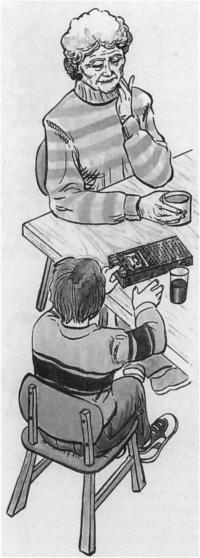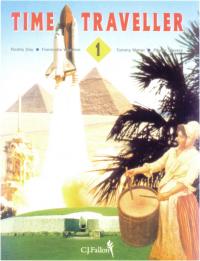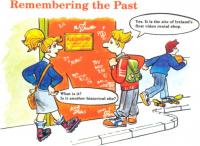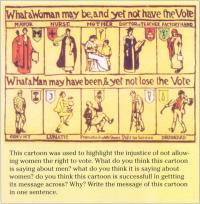History in Primary School; A Future for our Past?
Published in 20th-century / Contemporary History, Features, Issue 3 (Autumn 1996), Volume 4 Whatever the final outcome of the Junior Certificate controversy and notwithstanding the gratifying level of support from the general public, it is likely that the pressure on history within a crowded curriculum will continue. This places an even greater onus on the primary sector which is the only level of the educational system where all children study history. How stands history in primary schools?
Whatever the final outcome of the Junior Certificate controversy and notwithstanding the gratifying level of support from the general public, it is likely that the pressure on history within a crowded curriculum will continue. This places an even greater onus on the primary sector which is the only level of the educational system where all children study history. How stands history in primary schools?
The position of history in Irish primary schools has changed enormously over the past thirty years. Developments within the subject itself, in the area of educational psychology and in society at large have all contributed to this change. From the late 1960s, a world-wide ‘crisis in history’ and a crisis of belief in the humanities generally reflected a decline in cultural certainty. In Ireland, this was reinforced by the resurgence of the troubles in the North which coincided with a period of curriculum reform. Curaclam na Bunscoile (the ‘new curriculum’), introduced in 1971, reflected new thinking in educational psychology. Its underlying emphasis on child-centred education, discovery learning and what the child can learn rather than what the child should learn had considerable implications for history.
Plato to NATO
The old fashioned chronological, Plato-to-NATO curriculum delivered in a traditional chalk-and-talk fashion was replaced by an approach which emphasised process as much as content. History is now introduced informally in first (six/seven year olds) and second classes, using legends and stories with a mythological or historical theme. More formal history teaching begins in third class with a simple treatment of topics using story, project, local history and simple line of development studies. Finally in fifth and sixth classes, by which stage most pupils can develop a more sophisticated sense of time and chronology, in depth studies of particular eras or topics (patch studies) are introduced. While a strongly chronological emphasis was eschewed, a simple chronological sequence was still to apply with pupils beginning with early history in third class and finishing with modern history in sixth.
Gap between theory and practice
The rationale for the new approach was sound but there is evidence that there has been a gap between theory and practice. Some critics suggest that the principles underlying the curriculum have never been fully implemented; others lament the downgrading of content in favour of process as a result of which, they claim, children emerge ‘knowing no history’.
 At the root of much of the confusion about primary school history since the early seventies is the fact there has been no broad agreement as to why history should be taught in the first place. This has been consistently borne out in a series of surveys of student teachers and serving teachers by the present author. Offered a choice of reasons for teaching history, no consensus emerged. Older teachers tended to emphasise traditional, baldly framed social/ moral/cultural reasons such as that ‘it was important for children to know the history of theirown country’. Younger teachers and students were less comfortable with such statements and preferred more generally phrased alternatives which mentioned our common heritage (sometimes without any national context being specified).
At the root of much of the confusion about primary school history since the early seventies is the fact there has been no broad agreement as to why history should be taught in the first place. This has been consistently borne out in a series of surveys of student teachers and serving teachers by the present author. Offered a choice of reasons for teaching history, no consensus emerged. Older teachers tended to emphasise traditional, baldly framed social/ moral/cultural reasons such as that ‘it was important for children to know the history of theirown country’. Younger teachers and students were less comfortable with such statements and preferred more generally phrased alternatives which mentioned our common heritage (sometimes without any national context being specified).
All groups responded unenthusiastically to the proposition that history could unify society or make good citizens. Clearly we have moved a long way from the certainty enshrined in the old ‘Notes for teachers’ in print until the late 1960s which confidently asserted:
In an Irish school in which History is properly taught, the pupils will learn that they are the citizens of no mean country, that they belong to a race that has a noble tradition of heroism, and persistent loyalty to ideals. In such a school, no formal exhortation should be necessary to bring home to every pupil the worth of good faith, courage and endurance and the strong grounds there are for the belief that a race that has survived a millennium of grievous struggle and persecution must possess qualities that are a guarantee of a great future.
That there should be less agreement on the role of history in the l990s is hardly surprising but it does have implications for the status of history as a subject, how it is taught and what is taught. Given the changes in Irish society and especially the turmoil in Northern Ireland it is understandable that attitudes to history should have become more measured, cautious and, in some cases, suspicious. However the way forward is through better history teaching rather than no history teaching.
Education for Mutual Understanding
In Northern Ireland, these problems have been addressed head on. The Education for Mutual Understanding approach which is now enshrined in the curriculum could profitably be implemented in the South. Even it divided societies, it is possible to reach some measure of agreement on the aims of history. The teaching of history in schools in the South would be assisted by a clearer elaboration of its underlying aims. Absolute consensus is not likely or even desirable. Under the broad headings mooted by the National Council for Curriculum and Assessment—a sense of time and a sense of place—these could be framed in an inclusive fashion and should embrace both educational and social reasons. In an age of increasing isolation, it hardly needs to be stated that there are strong social/cultural/moral reasons why pupils should be introduced to the history of their own parish, street, village, town, city, community, county, country, continent, world.
There are other ways in which we might learn from the experience of Northern Irish schools. The surveys referred to above revealed that the skills-based approach which has been very influential throughout the United Kingdom has made little impact here. A development of the learning-through-discovery approach, the skills movement is based on the view that the study of history using appropriate methods can develop important social and educational skills. If used in isolation, this approach may be criticised for under-valuing content but if process and content go hand in hand, the approach has much to recommend it.
Local history and heritage studies
In the area of local history too, the northern experience is instructive. To date, the revolution in local history and heritage studies which has taken place throughout the country in the last decade has made little impact in schools. Curaclam na Bunscoile identified the value of local history in the context of the child-centred approach. However, local history was viewed as a method rather than an area of study and the emphasis was on local manifestations of national movements rather than the locality in its own right. Since then, a number of reports have stressed the importance of local history but, as the Department of Education’s own survey has confirmed, while the majority of teachers endorse this view, only a small minority actually do anything about it.
The most consistent problem cited by teachers in this as in other areas is the lack of resources. This problem has eased with large amounts of material becoming available in libraries, heritage centres etc. but it is not in a form that is easily usable in classrooms. In the North, teachers have been seconded to teachers’ centres, colleges of education, heritage centres and museums with the specific remit of preparing material for classroom use. A similar policy here would make a considerable contribution to the promotion of local history in schools.
Another small but important measure, and one which would cost nothing, would be to enforce a requirement that all schools draw up and publish a local history/local studies curriculum. This would transform the occasional, haphazard status of local history. The provision of a standard planning matrix to be completed by all schools would encourage teachers to sit down and plan a consistent programme covering different aspects of the local environment and its development.
Although the new curriculum allowed considerable autonomy to schools in the area of framing their own history programme, this autonomy has tended not to be exercised. In practice, the topics suggested as examples by the handbook, were taken en bloc by the writers of the first generation of textbooks and thus, indirectly, by teachers. Again, the circulation of a standard planning matrix would be useful. Such a matrix would be divided horizontally by term and year/class and would have headings for topics and a checklist of methods and areas (local/national/international, early/medieval/modern, integrated study/not integrated, patch/line of development/story/project/drama/ textbook).
Guidance on the criteria to be used in designing the curriculum would need to be provided through in-service courses. A well balanced curriculum would contain topics from early, medieval and modern and local, national and international history. The precise balance between local, national and international is a matter of debate: thirty, forty and thirty per cent respectively might be reasonable, bearing in mind that some topics might fit two or all three of these categories.

All illustrations are from the Time Traveller series, courtesy of the publisher, C.J. Fallon.
Chronological or concentric?
An immediate choice to be made when designing a curriculum is whether to adopt a chronological or concentric curriculum. Traditionally, Irish schools used a chronological curriculum with pupils beginning with early history in third class and ending with modern history in sixth. In the 1980s the Department of Education moved towards a concentric curriculum in which each class studies a range of topics from early, medieval and modern history. Topics covered on a simple level in one year can be developed in the following years or related topics introduced. Because of its variety, the concentric curriculum is considerably more attractive for pupils and teachers alike.
This quiet revolution was achieved by changing the guidelines for publishers of textbooks, presumably on the basis that the most effective way to change classroom practice is to change the textbooks. However, the lack of in-service guidance contributed to an increasing dependence on textbooks and exacerbated a widespread unease about pupils’ declining grasp of chronology which had first begun with the popularisation of patch studies.

Have you ever noticed initials carved on a tree or on a desk? Did it make you think of the people who carved the initials? If it did, then, without knowing it, you
were thinking about history.
History is all around us whether we notice it or not. It is the old building at the end of the street, the ruined castle. the old monastery. It is the songs we sing. the games we play, the names of our streets. As the Irish poet Seamus Heaney says. it is even old objects thrown on the top of the dresser:
In my own case. the top of the dresser in the kitchen of the house where I lived for the first twelve years of my life was like a time machine.
This was where all the old nails and screwdrivers and putty and lamp. wicks and broken sharpening’stones would end up.
Patch studies
Patch studies deal with isolated islands in time; if used in isolation pupils may be confused as to where topics fit chronologically. The concentric approach carries with it the same danger but in both cases the problem is relatively easily resolved by the consistent use of individual pupil and class time-charts. These allow topics to be presented in sequence and located in time, as well as providing a colourful focus for recapitulation and consolidation. They also help develop the pupils’ sense of time and chronology, both of which are central to history.
The controversial move back to a prescribed national curriculum in Britain may tempt a move in that direction here. One suggestion which has been mooted is that particular eras should be designated for study. This would be regrettable. We have managed to retain a reasonably standard approach while allowing flexibility. There are limits to what can be covered with primary school pupils because of their stage of development and the ever-more crowded nature of the curriculum but it would be a retrograde step to begin prescribing or restricting the areas to be covered.
A significant weakness in the current situation is the lack of a clear progression particularly in terms of attainment levels from one year to the next and indeed from primary to secondary level. This contrasts with Britain where skills and attainment levels have been set for age seven, eleven and sixteen. This has attracted justifiable criticism for being too rigid but it is helpful to adopt general targets with allowance being made for individual differences. Setting targets presupposes assessment. Currently there are virtually no guidelines for teachers in relation to assessment in history. A systematic provision for monitoring of pupils such as is provided for in Fallon’s new Time Traveller series is an urgent requirement.
The adoption of attainment levels for seven year olds in Britain also draws attention to another contrast: in Ireland formal history has not even begun at this stage. The new British practice is based on the pioneering work of Joan Blyth and others who have shown that even younger children can be helped to develop a worthwhile sense of time and place. Although the findings suggest that confining younger children to myth and legend is unduly restrictive, this work has had little effect here. Myths and legends do still have a role—it is worth noting that the research of Kieran Egan has underlined the value of the old-fashioned myth/legend/ story approach in creating a sense of and appetite for history in younger children.
Given that the primary teacher is by nature a general practitioner, it is likely that the history textbook for the foreseeable future will continue to play a key role in our schools. In these circumstances, it is all the more important that the Department of Education’s guidelines are updated and implemented. The existing guidelines state that each topic in a textbook should support classroom work for a number of weeks. This is practical only if the pupil’s book is accompanied by a reasonably extensive handbook. Yet the Time Traveller series is the first with such a handbook.
 Gender issues
Gender issues
Although the guidelines are enlightened in regard to gender issues, the performance of most textbooks in this area remains abysmal. In recent decades, there has been a growing awareness of the extent to which women have been excluded from the accepted version of history, appearing only as footnotes to the main event, if at all. Addressing the problem is not merely a matter of putting more women into history textbooks or of increased sensitivity to language, although both of these are necessary. Textbooks and teachers need to take cognisance of the fact that events and movements which centre on women’s struggle for civil, political, economic and social equality are as central to history as other movements and that women should be constructed as historical subjects in all eras under study.
The new history (which is now not so new) introduces the pupil to evidence and its interpretation. New textbook series need to reflect this explicitly by moving beyond simple presentation of information to presentation of evidence and inviting the reader to engage in its interpretation. The nature of history and how we know about the past should be raised. The stage of development of primary pupils imposes limitations on what can be achieved but vital work can be done which prepares pupils for the approach in the first three years of secondary school. This, in turn, emphasises the need for more co-ordination between first and second level.
These issues and many more need to be addressed. The preliminary indications from the National Council for Curriculum and Assessment committee examining history at primary level indicate that we may not have long to wait. If that is the case then perhaps we may be able to look forward with some confidence to a healthy future for our past.
Pauric Travers is head of the History Department at St Patrick’s College, Drumcondra and joint author of Time Traveller, the new Fallon’s Primary History Programme.
















